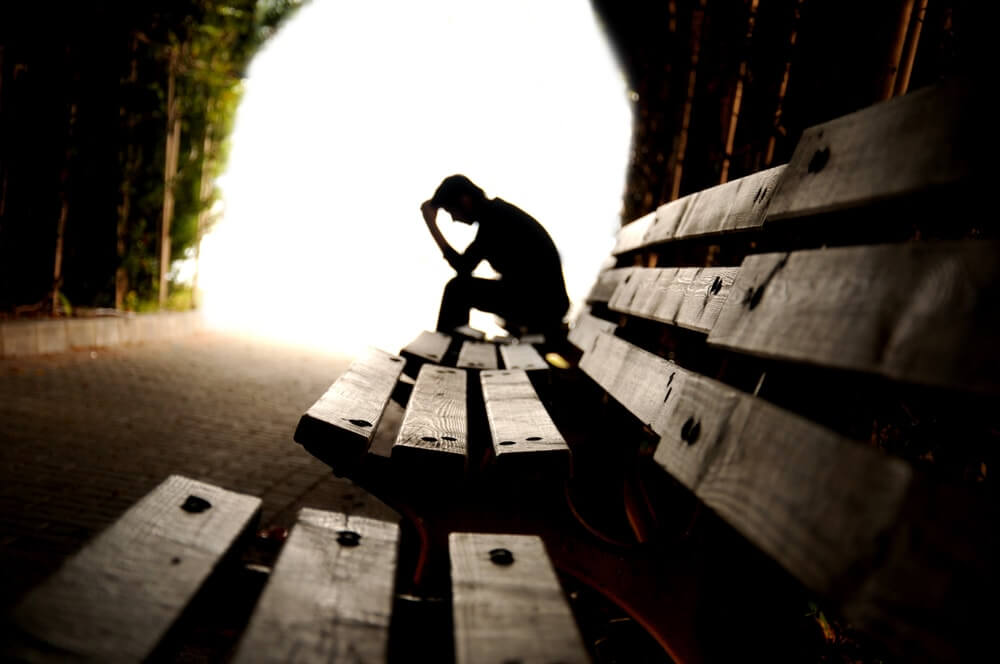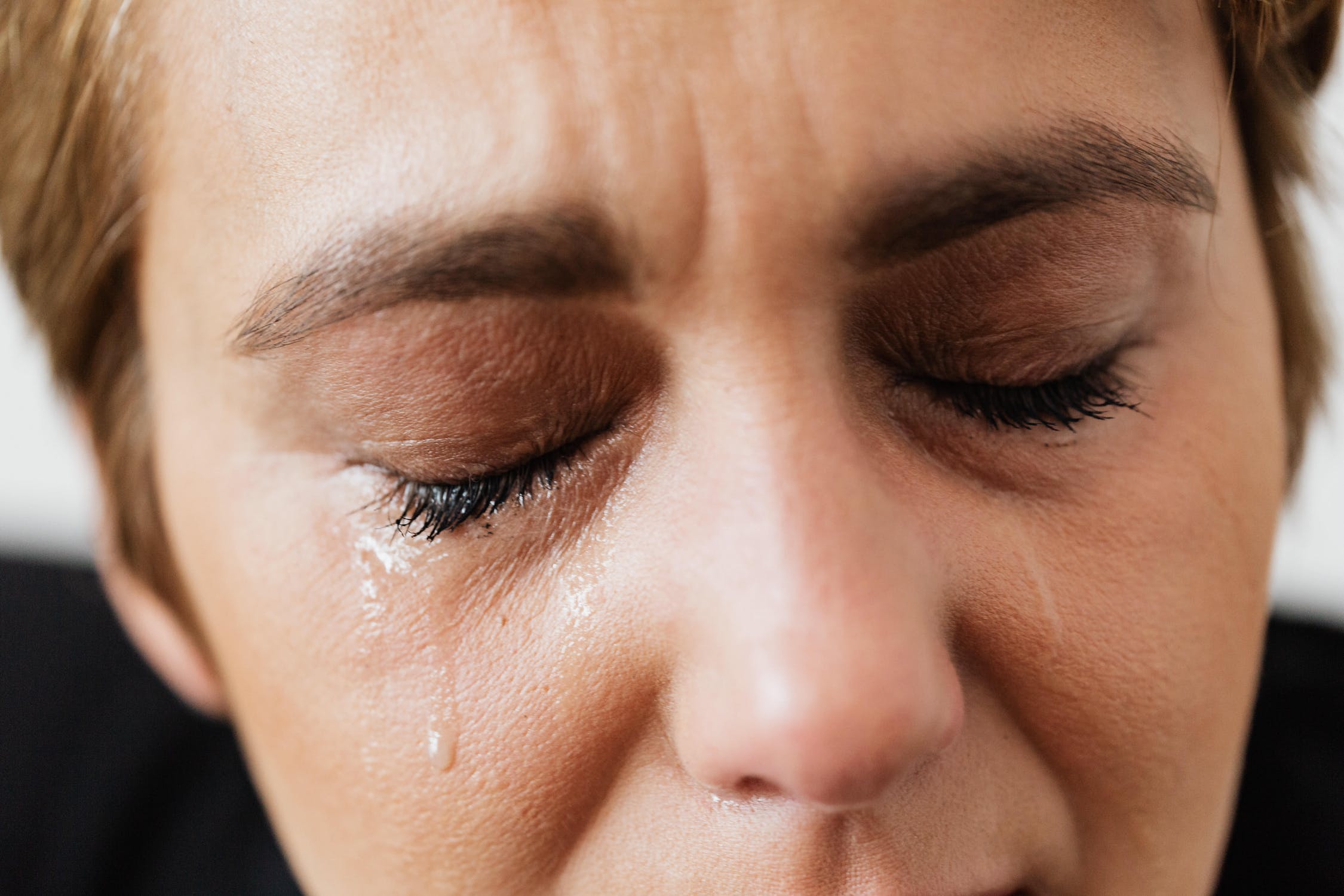
Depression is one of the most common mental health disorders in the world. Globally, over 350 million people suffer from the depression, and over ten percent of Americans are prescribed antidepressants every year as a form of depression treatment. The total economic burden of depression in the United States totals over eighty billion dollars in lost productivity, making it the leading cause of lost work days due to medical problems. The following article explains what depression is, its symptoms, different treatment options, and their efficacy.
What is Depression?
Depression can be characterized as a loss of self, or a depersonalization. A lack of motivation, decreased energy, and suicidal ideation can cause even the most optimistic and energetic person to become an unrecognizable shell of themselves.
Watching a loved one suffer from depression is stressful for family, friends, and work colleagues. There are signs and symptoms to watch out for, and resources available to help someone suffering receive appropriate depression treatment services.
The Most Common Symptoms of Depression
- Anhedonia (loss of pleasure and interest)
- Fatigue
- Sleeping too much or too little, insomnia or restlessness
- Changes in appetite
- Weight gain or loss
- Unexplained feelings of guilt or shame
- Excessive crying or irritability
- Emotional numbness
- Hopelessness
- Rumination
- Social isolation
- Problems concentrating
- Slowed activity
- Thoughts of suicide
At its worst, depression can lead to suicidal behavior and attempts. Suicide is the tenth leading cause of death in the United States, and more people die by their own hand than in car accidents.
Types of Disorders Considered for Depression Treatment
Major Depressive Disorder
For an official diagnosis, a combination of five of the above symptoms must be present for at least two weeks.
Dysthymia or Persistent Depressive Disorder
Similar to major depressive disorder but the symptoms are considered milder and must last for two years for an official diagnosis.
Bipolar Disorder
Characterized by extreme swings in mood, from mania to depression, with normal moods in between that may last for months or sometimes years.
Seasonal Affective Disorder (SAD)
Major depression caused by changes in weather, usually occurring in the winter months and abating with spring time and increased sunlight.
Psychotic Depression
Psychotic depression occurs when someone presents with symptoms of major depression along with psychotic symptoms, such as hallucinations, paranoia, and delusions.
Postpartum Depression
Occurs in women who have recently given birth. Postpartum depression can lead to psychotic symptoms.
Premenstrual Dysphoric Disorder (PMDD)
PMDD sufferers have symptoms of major depression at the start of the menstrual cycle.
What are Depression Treatment options?
Depression is a complex mental health issue and there are several types, each one requiring a customized treatment plan. Treatments for depression range from therapeutic, pharmacological, electric shock therapy, and Transcranial Magnetic Stimulation.
Therapeutic Depression Treatments
Behavior Therapy
With behavior therapy, patients are encouraged to examine their negative, harmful behavioral patterns associated with psychological distress. Patients are encouraged to explore and develop better coping mechanisms and to modify their behavior when experiencing depressive symptoms or other negative emotions.
Talk Therapy
The least efficacious of the three, talk therapy is focused on current thoughts and feelings. While talk therapy is beneficial, it does not explore the harmful beliefs and negative behavior patterns associated with depression, and therefore, does not give patients the chance to challenge them and modify their feelings and reactions to them for the better.
Cognitive Behavioral Therapy (CBT)
CBT is an evidenced-based therapy method which focuses on solutions and requires the patient to take an active role in their recovery.
CBT explores the harmful thoughts and emotions a patient may have that exacerbate their depressive symptoms. CBT encourages the patient to challenge their assumptions, change their thinking patterns, and improve their behavior with positive changes and outlooks.
Patients who undergo CBT sessions with a trained therapist have the lowest rates of relapse amongst depression patients who do not utilize CBT in their treatment plan.
Pharmacological Treatment Methods
There are dozens of medications that can be prescribed for depression. Depending on which type of depression the patient has, the severity of it, and if there are any contraindications, any one of these medications can ease the symptoms of depression and help the patient make a life-long recovery.
Monoamine Oxidase Inhibitors (MAOIs)
MAOIs are one of the oldest classes of antidepressant medications on the market, first emerging in the 1950s. They are not prescribed very often anymore because they can cause dangerous interactions with other medications and certain foods, such as fermented cheeses and alcohol.
MAOIs, if abruptly ceased, can cause unpleasant and sometimes dangerous withdrawal symptoms, including psychosis. Coming off the drug must be done under the care and supervision of trained medical professionals to prevent these withdrawal symptoms and the risk of experiencing a rebound depressive episode in the form of dysphoria and mood disturbances.
But despite their side-effects, MAOIs are still highly effective in treating depression, especially depression that is accompanied with anxiety and panic disorders and has been found to be resistant to the newer classes of antidepressant drugs.
Examples of MAOIs:
- Marplan
- Nardil
- Emsam
MAOIs, though effective treatment methods, fell out of favor with most United States physicians in the 1980s, when newer classes of antidepressant medications emerged.
Selective Serotonin Reuptake Inhibitors (SSRIs)
SSRIs are the most prescribed treatment option for moderate to severe depression. These drugs have high efficacy rates and have low side-effects and are safer to use than older MAOI treatments.
SSRIs work by increasing naturally-occurring serotonin in the brain. Serotonin is a neurotransmitter and a mood stabilizer. A lack of it is a major contributor to developing depression and other mood disorders.
An SSRI will block serotonin from being processed and reabsorbed back into the brain. Since the brain will naturally produce more serotonin, the SSRI will keep it in the brain for longer, increasing the amount of it, and improving the patient’s mood. SSRIs only affect the reuptake of serotonin and are also used to successfully treat anxiety and panic disorders.
FDA approved SSRIs:
- Lexapro
- Celexa
- Prozac
- Paxil
- Zoloft
- Viibryd
Within two to six weeks of taking an SSRI, over half of patients experience a reduction in depressive symptoms. Taking an SSRI will also greatly reduce the risk of relapse.
Serotonin Norepinephrine Reuptake Inhibitor (SNRI)
These are some of the newest classes of antidepressant drugs on the market. They are very similar to SSRIs, except they target the reuptake of serotonin and norepinephrine.
Norepinephrine is responsible for feelings of motivation, energy, and alertness, which are lacking in people suffering from depression. If these symptoms are particularly severe, an SNRI may be prescribed.
- Pristiq
- Effexor
- Cymbalta
When Therapy and Medication Are Not Enough
Sometimes depression is so severe and the patient’s biological make-up resistance to pharmacological methods. In these cases, more invasive methods may be needed.
Electric Shock Therapy (ECT)
Pop culture would have many mistakenly believe that ECT is a torture mechanism and not a legitimate treatment method for severe mental health disorders. Despite the stigma, ECT is a commonly used treatment for severe, treatment resistant depression, bipolar mania, aggressive dementia, and catatonia.
Electric shocks are used to induce a mild seizure. The seizure causes changes in brain chemistry, and improvements in mood and mental health functioning can be seen immediately after an ECT session.
ECT is administered under general anesthesia, and most people who undergo ECT notice an improvement after six sessions.
Transcranial Magnetic Stimulation (TMS)
TMS uses magnetic waves to activate certain areas of the brain. While ECT is not targeted to certain areas, TMS is. TMS works in the same way that ECT does, in that it changes the chemical structure of the brain, but without any of the harmful side effects.
During a TMS session, patients do not require anesthesia. An electromagnetic coil is placed against the patient’s forehead, and small, electromagnetic pulses are generated through the coil. The pulses pass through the skull and stimulate the area of the brain thought to regulate mood.
Because the electromagnetic pulses and the coil through which they pass can be placed in specific locations, scientists and doctors can move the coil around to certain parts of the brain, making the entire method much more targeted and precise than ECT.
In a large clinical study of patients undergoing TMS treatment for the first time, 14% of patients experienced a remission of symptoms after one session. After the second session, that number rose to 30%.
Despite its commonality, severity, and economic and societal consequences, depression can be treated and cured. After a bout of depression, many go on to make a full and life-long recovery. Although some may experience a relapse even with treatment, most do not. Only about twenty percent of people who experience depression and take preventative measures will experience a relapse in symptoms.
With the help of a trained therapist, caring and knowledgeable doctors, and by taking an active role in managing their illness, sufferers can live a life free from the black moods of depression.
How Does Depression Change Behavior?
Adolescence and young adulthood involve plenty of angst and uncertainty. When you add a condition like depression to the mix, those youthful years get even more complicated. Early diagnosis and treatment are crucial, and that means spotting the symptoms and getting help. Because one mental disorder often accompanies another, a program that offers depression treatment and treatment for other conditions may be the best option.
It’s normal for adolescents to “act out” or have hormonal mood swings, but teen depression is more serious. To cope with feelings of hopelessness, anger, and sadness, teens and young adults can behave in unhealthy and self-destructive ways. These kinds of behavior might be a cry for help:

What Are Depression Symptoms in Adolescents?
Young people who are depressed need help from the adults they trust to help them understand their pain and get the help they need. Watch for these signs and symptoms:
You can distinguish depression symptoms from everyday struggles by how much they disrupt daily life, how long they last, and how unlike they are from the individual’s usual behavior. Anger, fear of rejection, unexplained aches and pains, and withdrawal from certain people are commonplace among teens and young adults.
How can Parents Help?
Adults can help by being supportive and present. The better the relationship, the easier it is to bring up and talk about unwanted conversation topics. Sometimes it’s enough to be there, but it’s also essential to know when to step in and get some help.
Talk of suicide is always a red flag, even if it’s jokingly expressed or hidden in creative writing. The discussion doesn’t increase the risk, and it lets the individual know they’re not alone. If there is a plan for self-harm, get help immediately. Remove guns and other items that could cause harm.
Southern California Rehab
Depression is the most common mental health condition in individuals between the ages of 18 and 25. If you’re concerned about depression symptoms in someone you love, the experts at our Southern California rehab center can help. We offer depression treatment for co-occurring conditions, including depression and substance use disorder. Contact us today to find out how we can help.
Get Help Now
If you or a loved one are struggling with Depression, or a co-occurring substance abuse issue, please contact our admissions team today for a free and confidential assessment.

